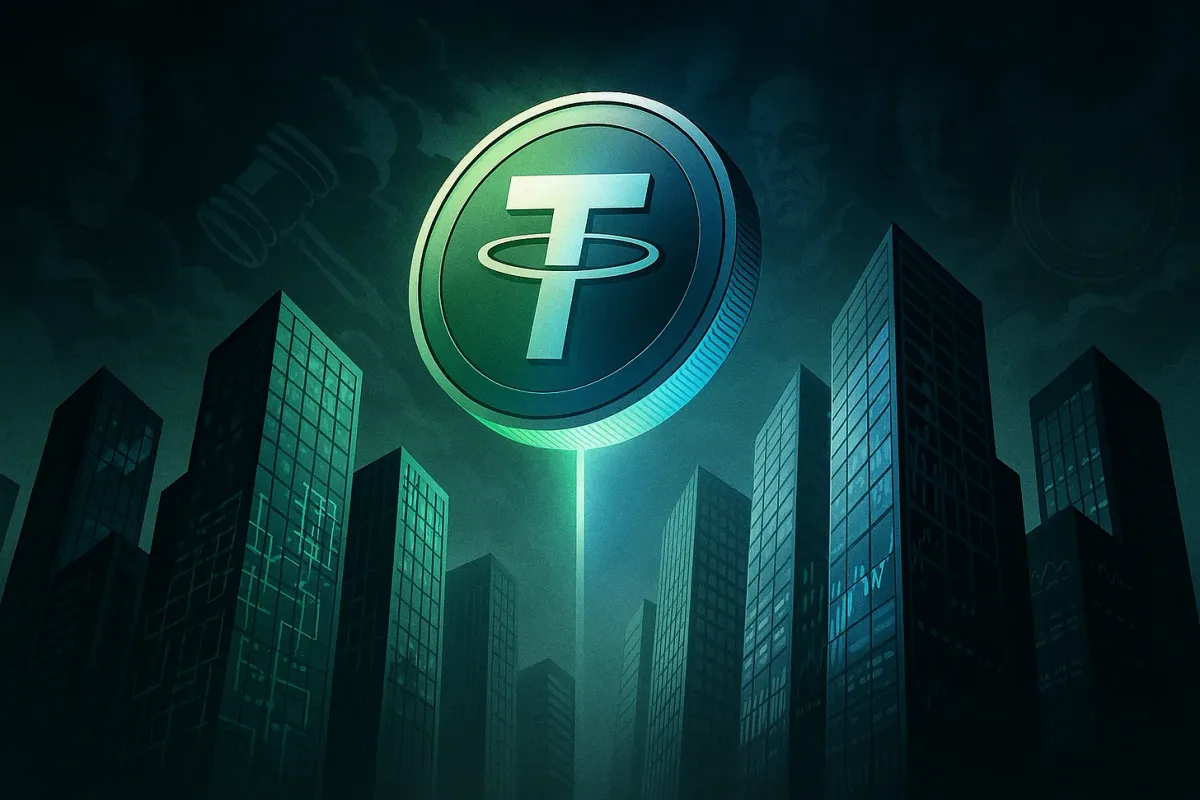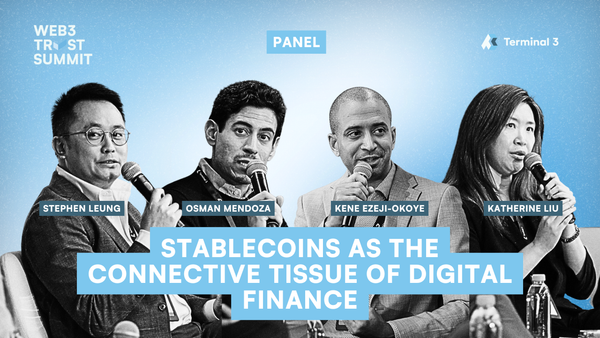Tether: Crypto’s most controversial firm wants to be tech’s biggest player
The final installment of our three-part series on Tether, the backbone of Web3 which makes tens of billions per year, looks at the future as it bids to grow its influence from the stablecoin leader to one of the most powerful firms in technology.

GM,
The final installment of our three-part series on Tether, the backbone of Web3 which makes tens of billions per year, looks at the future as it bids to grow its influence from the stablecoin leader to one of the most powerful firms in technology.
Best,
Gary and Jon
PS: Read our issue one (how Tether’s simple model is so profitable) and two (how controversy didn’t kill it) in the series for the full picture
What’s going on?

Tether’s evolution is far from done.
In the last two issues we explained how USDT, a simple, offshore product, became the default stablecoin for traders and a gushing money tap for Tether. That’s despite skepticism from critics and action from regulators.
That paradox has defined Tether since its creation in 2014. More than a decade on, though, it’s widening its scope. The core remains the same, but its vast profits (which reached $13 billion in 2024 alone) are going into an expansion of scope and influence.
Earlier this month, Tether announced plans to introduce its first US-compliant stablecoin (USAT) by the end of the year leaning on the recently passed GENIUS Act, which regulates stablecoins on American soil. Notably, Tether appointed former White House Crypto Council executive director Bo Hines to lead that effort.
But there’s more. Tether is reportedly looking to raise as much as $20 billion in additional capital from external investors with financial services giant Cantor Fitzgerald—which also has White House links—said to be in charge of the fundraising efforts, which are focused on major names. Two rumoured investors are SoftBank and Coinbase-backer Ark, according to a separate Bloomberg report.
The timing doesn’t appear to be accidental. With a federal stablecoin framework now in place in the US, Tether has an opportunity to plant a compliant flag on American soil, without abandoning the offshore engine that built the franchise.
The next act is clear: turn market dominance into durability.
SO WHAT?
1. Diversifying through investment

Tether’s serious profitability gives the company the capital to bet on the future through investment.
The company has disclosed multibillion-dollar commitments, but this is less about venture capital and more about alliances and deals that naturally complement its business, and drive adoption of its stablecoins.
Energy and mining are responsible for significant capital. Tether has committed multiple billions of dollars to build out Bitcoin mining operations across Uruguay, Paraguay and El Salvador, while exploring renewable energy and other sustainable options for doing so. Latin America is already well known for its renewable energy rates—which are as high as 94% in Uruguay—and Tether has been part of that scene since 2023.
Mining enables the firm to add to its crypto balance sheet, which already includes over 100,000 BTC. CEO Paolo Ardoino said earlier this year that Tether aspires to be the world’s largest Bitcoin mining company, and estimates show it is close. The goal is not just to accumulate BTC (Ardoino said 15% of profit will go to buying BTC or mining hardware) but also to participate in the network’s security.
Every company on Earth is investing in AI, and Tether is no different. Its focus ranges from infrastructure to platforms, and even more audacious plays.
The company acquired a major stake in Northern Data, which provides cloud, data and Bitcoin mining services, in partnership with Rumble, a censorship-resistant alternative to YouTube which Tether owns 48% of.
Alongside that infrastructure play, Tether is building QVAC (QuantumVerse Automatic Compute), a development platform to enable AI agents and services to run on user devices without a dependence on centralized services or cloud infrastructure. The first batch of apps is yet to arrive, but you can expect that the platform will be tightly aligned with USDT.
Tether has also forayed into brain-computer interfaces with Blackrock Neurotech, a rival of Elon Musk’s Neuralink. It paid $200 million to gain a controlling interest in the business last year—that’s the type of moonshot that could help futureproof its position as technology advances.
Its AI plays naturally parlay into communication, where Tether has invested resources to build tools for developers.
It operates encrypted communication protocol Holepunch, which it used to build a secure video calling service, peer-to-peer protocol Pears.com, which it showcased through a credit system developed by Tether itself, and its Hadron blockchain for tokenized assets.
Finally, Tether also institutionalized its deals with Tether Ventures, which formally launched in July to back technology startups focused on decentralization, payments, AI, energy and more. The fund uses Tether’s balance sheet for capital and it has already invested in more than 120 companies. This venture arm broadens Tether’s focus so it can touch more emerging technology.
2. US market opportunity opens

For a decade, Tether thrived by being everywhere except the US.
The company has historically avoided the US due to hostile regulators—it paid fines to both the SEC and CFTC over use of its reserves and misleading statements. Now, the country looks inviting. The US passed the GENIUS Act to allow regulated stablecoins, there’s a crypto-friendly President in office, and institutions are embracing Web3.
Tether is making a major play for the US market with USAT, an upcoming stablecoin that will adhere to America’s freshly minted regulations and live on Tether’s Hadron chain. That US play is also boosted by the arrival of Bo Hines, an entrepreneur who is the former executive director of the White House Crypto Council.
Hines’ network is sure to help Tether as it negotiates the challenges of this newly opened window of opportunity in the US market. A number of companies have gone so far as to partner with businesses aligned with President Trump himself. Crypto.com, for example, has partnerships with Trump Media, which operates Trump’s Truth Social platform, and World Liberty Financial, the crypto venture that’s backed by the Trump family.
Another signal of the changing winds is the IPO of Circle, Tether’s closest stablecoin rival, which went public in April. Its share price has increased more than 50% since the listing. Exchanges Gemini and Bullish have also gone public in 2025, while Coinbase shares are up 20% this year-to-date.
It isn’t just stock market watchers who are taking up Web3, institutions are increasingly dipping their toes. That’s a huge opportunity for Tether, but the terms of the GENIUS Act will mean it needs to actively comply with regulations stateside for the first time.
That will require a new level of compliance that Tether has never dealt with, including policy-grade AML and KYC processes, monthly reporting and more. That said, critics have said the bill is fairly light on requirements given that stablecoin issuers will essentially be managing digital money in the world’s largest economy. In addition, the requirements will apply only to USAT, not USDT or any other aspect of Tether’s non-US business.
3. Legitimacy through major investors

The plot thickened with a recent Bloomberg report that the company is planning to raise between $15 billion and $20 billion in a deal that could value its business as high as $500 billion. If true, the move would not just cement Tether’s dominance in crypto but elevate it into the highest tier of global technology companies by valuation.
Ardoino, the Tether CEO, acknowledged discussions with potential investors but he did not confirm figures. He indicated that new capital would give Tether the firepower to significantly expand its operations and accelerate its presence in its expansion areas.
That ambition and those potential numbers would mark a turning point in how Tether is perceived outside crypto.

The scale of the reported fundraising becomes clearer when compared to other tech leaders.
- OpenAI raised $40 billion at a $300 billion valuation in its most recent round
- Elon Musk’s xAI is seeking $10 billion at a $200 billion valuation
- Anthropic secured $13 billion at a valuation of $183 billion
- Stripe, once Silicon Valley’s most valuable startup, now sits above $100 billion
Against this backdrop, Tether’s reported $500 billion valuation places it ahead of these peers and signals that its stablecoin business is not just lucrative but more important than ever.
For a company long defined by opacity, fines and regulatory skirmishes, such a raise would mark a transformative coming out moment.
Since its founding in 2014, Tether has brushed off critics that include the SEC, the CFTC, and international governments. Its reserves were questioned, its disclosures attacked, and it has been accused of propping up Bitcoin’s price. None of that derailed its ascent, though, because USDT became indispensable to traders worldwide. Distrust didn’t matter when it did all it needed to do.
The injection of blue-chip capital would change the equation. Reputable institutional investors would not only validate Tether’s business but provide further political cover and strategic alliances. The goal could well be to reposition Tether as a legitimate heavyweight in global finance, not just a crypto-native operator. Any such upgrade could be even more valuable than the capital itself.
Skeptics will argue this is an elaborate case of “fake it till you make it,” with Tether seeking respectability through association rather than transparency. Supporters will counter that the world’s largest stablecoin issuer is simply with the realities of mainstream adoption and institutional capital.
Either way, raising tens of billions from top-tier investors would mark a watershed. It would give Tether the same kind of balance-sheet strength and strategic latitude currently enjoyed by companies shaping the frontier of AI and fintech. That didn’t seem plausible even just a few years ago.
Whether this is the moment critics finally treat Tether with respect, or the start of a new phase of scrutiny, remains to be seen. What is clear is that the company that built crypto’s most essential dollar is now bidding to become one of the world’s most powerful technology firms. It may just get there faster than we thought.
News bytes
Circle is adding an on-chain refunds feature to broaden the appeal of its USDC stablecoin to more institutional users like banks
Kraken is reportedly in discussions to raise $200M-$300M at a $20B valuation, the exchange recently raised at a $15B valuation and it is planning an IPO
Nine banks in Europe have teamed up to issue a euro-denominated stablecoin that will be compliant with regulations in the EU
Content delivery company Cloudflare announced plans for its own stablecoin which will be used in transactions for using AI-based agents and related systems
We wrote about the incredible growth of decentralized exchange Hyperliquid, and already it has stiff competition through Astor, a project founded by Binance employees which is backed by Binance itself—Astor’s 24-hour trading fees have surpassed Hyperliquid, Uniswap and even Tether at the time of writing
That’s all for this week!
Share your feedback, questions or requests via email to: sowhat@terminal3.io




